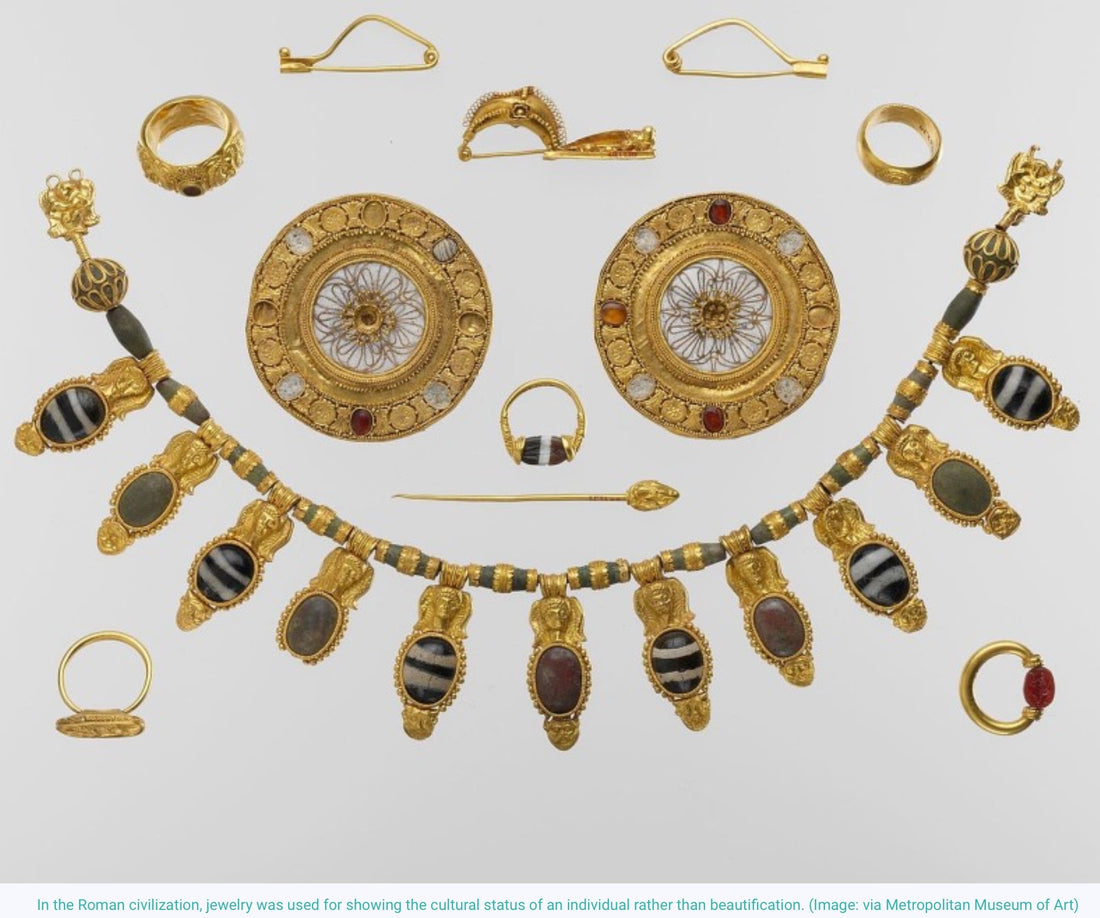Handmade jewelry has been cherished for centuries, not only for its beauty but also for its cultural and historical significance. The art of jewelry-making dates back to ancient times, where skilled artisans crafted exquisite pieces that symbolized power, status, and personal adornment. In this blog post, we delve into the fascinating history of handmade jewelry in ancient civilizations, marveling at the creativity and craftsmanship of our ancestors.
-
Ancient Egypt: The ancient Egyptians were known for their love of opulence and grandeur. Jewelry held immense importance in their society and was worn by both men and women. Intricate designs featuring precious metals like gold and silver adorned with vibrant gemstones, such as lapis lazuli and turquoise, showcased their wealth and social status. The jewelry often featured symbolic motifs like scarabs, lotus flowers, and falcons, reflecting their beliefs in the afterlife and gods.

-
Ancient Greece and Rome: Greek and Roman civilizations celebrated beauty and aesthetics through their jewelry. Greeks favored delicate gold jewelry with intricate filigree work and precious gemstones. They also used materials like pearls, amethysts, and garnets. Romans, on the other hand, embraced a more bold and extravagant style. They adorned themselves with elaborate gold necklaces, earrings, and brooches, often set with colored gemstones and cameos.

-
Ancient India: In ancient India, jewelry was deeply intertwined with spirituality and rituals. Intricately handcrafted pieces were made from gold, silver, and gemstones, reflecting the rich cultural heritage of the country. Traditional Indian jewelry featured elaborate designs, including necklaces, earrings, bangles, and nose rings. Each piece had symbolic significance and was worn during festivals, weddings, and religious ceremonies.

-
Ancient China: Chinese jewelry craftsmanship dates back thousands of years. Jade, a revered stone, held immense value and was believed to possess protective properties. Intricate gold ornaments with vibrant gemstones were also highly prized. Symbolism played a vital role in Chinese jewelry, with motifs like dragons, phoenixes, and lucky symbols representing power, prosperity, and good fortune.

Conclusion: Handmade jewelry has a long and storied history, stretching back to ancient civilizations that celebrated beauty, craftsmanship, and symbolism. From the opulence of ancient Egypt to the elegance of Greek and Roman designs, and the spiritual significance of Indian and Chinese jewelry, these ancient creations continue to inspire and captivate us. The craftsmanship and artistry of our ancestors live on in the legacy of handmade jewelry, reminding us of the timeless allure and cultural importance of these exquisite pieces.
